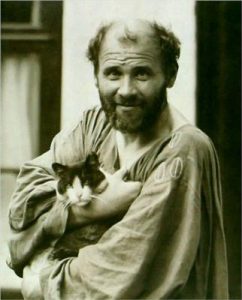
1862 - 1918
Gustav Klimt
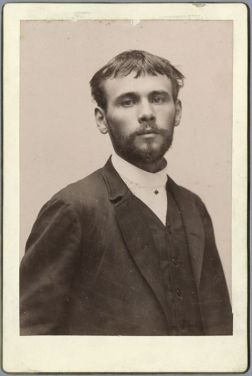
description
An outstanding Austrian artist of Jewish origin, a decorator, a master of monumental painting, who played a big role in the development of Art Nouveau.
His father was a hereditary jeweller from Bohemia but did not have a stable income. His mother, Anna Finster, was an academic but not very successful musician. Gustav was the second of seven children of a Jewish family. Klimts were poor, in the early years of the Habsburg Empire, the work was not enough, especially for ethnic minorities. At an early age, Gustav and his two brothers, Ernst and Georg, showed their obvious artistic talents, and Gustav was noted as an exceptional draftsman.
Gustav Klimt was one of the founders of the Vienna Secession – the association of progressive artists who protested against traditional painting. He became the first President of the Secession and the organizer of exhibitions of the society. Since 1898, Klimt had collaborated with the art magazine named “Sacred Spring”, in which the works of Symbolists Beardsley, Moreau, Puvis de Chavannes were published. The artist’s work, aimed at introducing avant-garde trends in Austrian painting. He played a crucial role in the development of the country’s fine arts of the early twentieth century.
Key ideas:
– Gustav Klimt’s paintings are bright, original and exciting, enjoying extreme popularity from the moment of their creation to the present day. They have a unique charm and sublimity of Art Noveau, its courage and shock.
– The artist’s works are characterised by a flat linear style and increased decorativeness. Their main feature is unique sensuality and eroticism.
– The paintings are full of deep symbols; their characters are surrounded by a secret and mystical halo. In many works, there are eternal themes of life and death, joy and sorrow. The author used voluminous modelling of the open parts of figures on a flat ornamental background.
– A favourite theme of the artist was the depiction of women, both portraits and nudity. The heroines of Klimt’s paintings often appear as mythological and unearthly creatures; they are distantly beautiful and surrounded by wealth and luxury. To emphasise these qualities, the artist used real gold leaf in some paintings. Klimt gave particular importance to the environment of the main object of the image, carefully painting patterns on clothes, ornaments and the background.
– The line plays a significant role in Klimt’s paintings. Though it is almost invisible in itself, the artist delimits space and separates the zones of solid colour from planes decorated with magnificent ornamentation with its help. This technique creates a distinctive rhythm in the canvases, making them extraordinarily expressive.
– Despite the abundance of details, the artist’s works do not create a sense of congestion but retain the severity and clarity of lines inherent in Art Nouveau.
– Apart from female images, the artist loved to paint nature. He created landscapes mainly in the summer while relaxing at picturesque lake Attersee. In them, Klimt retains his individual style, transferring the energy of nature through the asymmetry of the composition and the free use of planes close in tonality. In landscape painting, the artist uses smaller strokes, creating a whimsical pattern of plants and flowers.
1862
1876
1883
1888
1897
1900 - 1904
1902
1905
1910
1915
1918
The birth of the artist
He perfectly passed the entrance exam at the Vienna School of Arts and Crafts
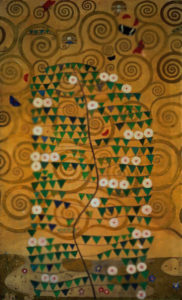
Together with the Match, he rented a large studio in Vienna
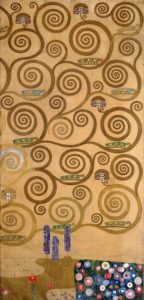
Emperor Franz Joseph awarded Klimt the Order of the Golden Cross for his services in art
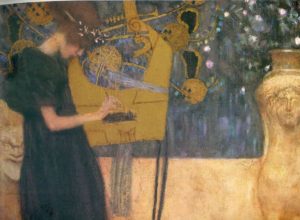
He refused from the membership in the Kunstlerhaus Association
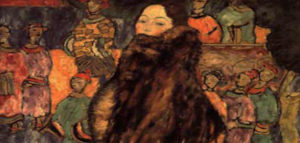
The artist did not take up state orders and did not decorate public buildings
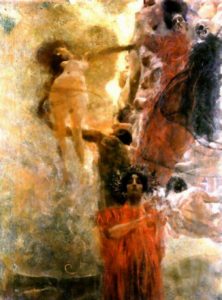
"Beethoven Frieze"
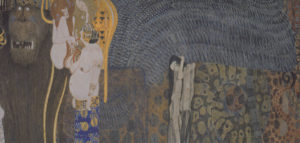
Klimt resigned from the Vienna Secession
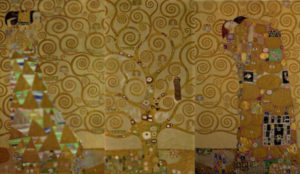
He was carried away by work in the open air
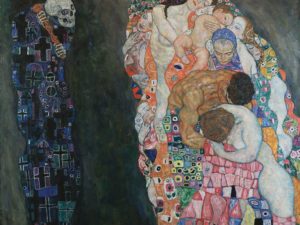
The artist's mother died
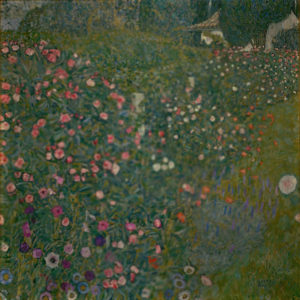
The death of the artist
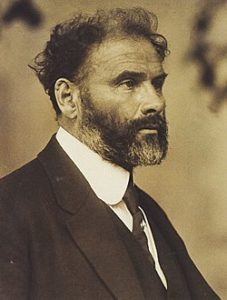
Gustav Klimt
On Artist
flow
Symbolism
friends
Max Kurzweil
artists
Titian
Peter Paul Rubens
Diego Velazquez
Hans Macarth
Fernan Knopf
Jan Torop
Ernest Klimt
Karl Grahovina
Ludwig Minnigerode
Michael Reaser
Hans Macarth
By Artist
flow
Expressionism
Surrealism
Modern
friends
Emilia Flöge
Koloman Moser
Franz von Mach
artists
Pete Mondrian
Egon Schiele
Oscar Kokoschka
Theo van Dusburg
Fedor Krichevsky
Victor Ivanovich Zaretsky
Alfio Giuffrida
